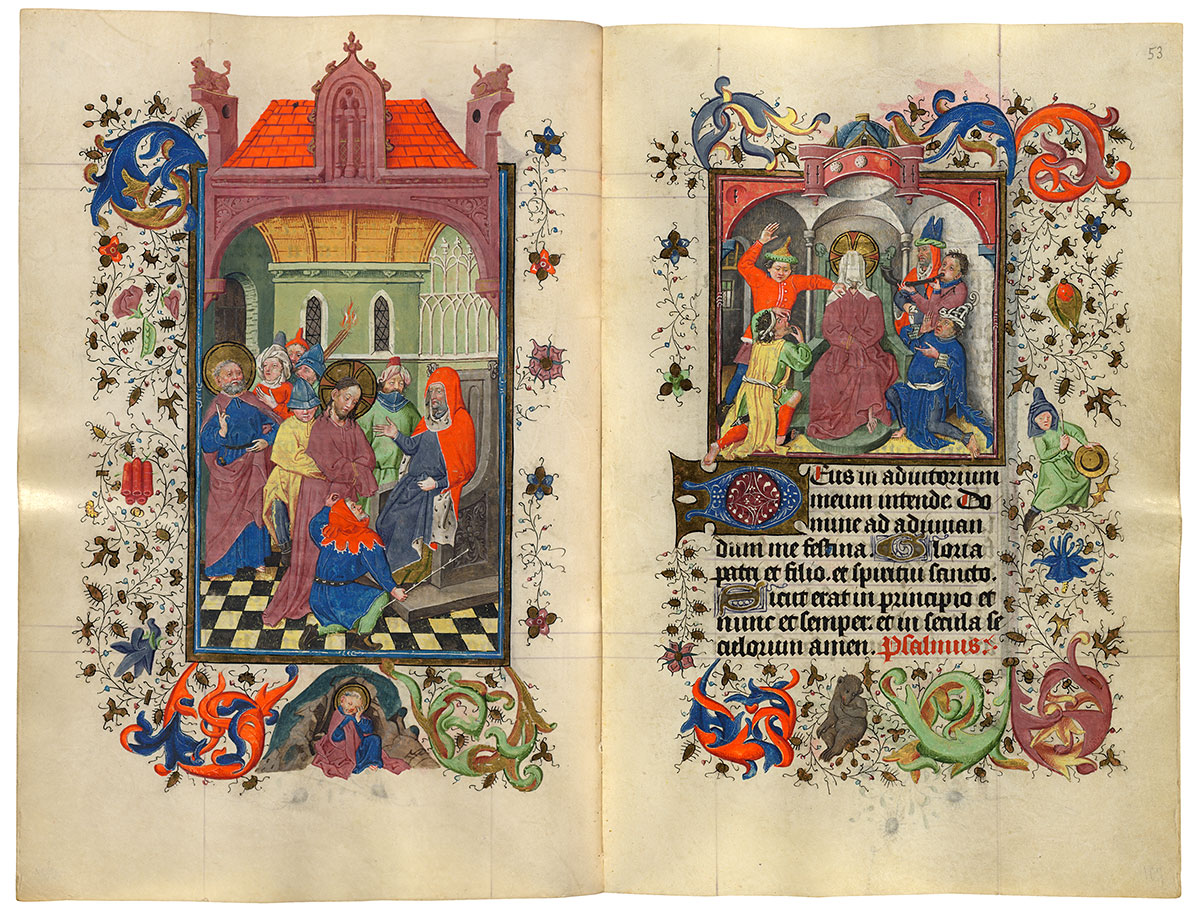
Christ before Caiaphas
Christ Mocked
Purchased on the Belle da Costa Greene Fund with the assistance of the Fellows and with special assistance of Mrs. Frederick B. Adams, Sr., Mrs. Robert Charles, Mr. Laurens M. Hamilton, The Heineman Foundation, Mrs. Donald F. Hyde, Mrs. Jacob M. Kaplan, Mrs. John Kean, Mr. Paul Mellon, Mr. and Mrs. Charles F. Morgan, Mr. Lessing J. Rosenwald, Mr. and Mrs. August H. Schilling, Mrs. Herbert N. Straus, Mrs. Landon K. Thorne, Mrs. Alan Valentine, Mr. and Mrs. Arnold Whitridge, and Miss Julia P. Wightman, 1970
A meek Christ is led to the throne of the Jewish high priest Caiaphas, whose corruption is indicated by his corpulence and foppish ermine-lined scarlet mantle. Before the pair kneels a man in a fancy dagged chaperon (connoting worldliness or evil), who mockingly accuses the Savior. Behind this group stands Peter, who denies any knowledge of the accused. Below the miniature, a repentant Peter weeps at the mouth of a cave. In the small miniature, Caiaphas, standing against the wall, directs the mocking of Christ. The seated Savior stoically endures indignities; his face has been covered with a cloth by his tormentors who taunt him, saying that surely his powers enable him to identify his abusers.
Hours of the Passion
The Hours of the Passion are often found in Books of Hours following, as in Catherine's manuscript, the Hours of the Virgin. The lengthy psalms are supplemented with prayers that narrate the story of Christ's Passion. If Catherine had little time, she might pray Matins alone, where the three lessons encapsulate the entire Passion, from Christ's Arrest until his Death on the Cross. A slower meditation is provided by the remaining Hours. The drama begins at Vespers, whose prayer narrates events from Holy Thursday: the Last Super and Christ Washing the Feet of the Apostles. Compline's prayer relates Christ's Agony in the Garden. The prayer at Lauds relates to Christ Before Pilate and Peter's Denial. The Passion concludes with None's prayer telling of Christ's Death on the Cross.
Image courtesy of Faksimile Verlag Luzern
